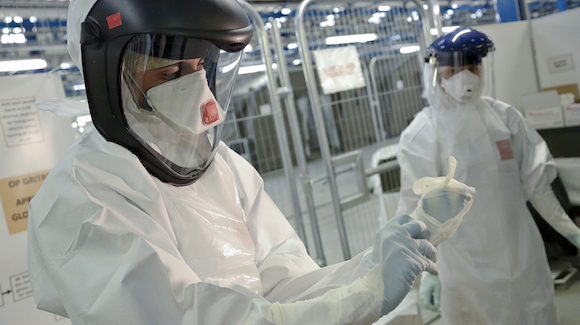NEW YORK (Reuters Health) – Porcine surfactant (poractant alfa) may work better than bovine surfactant (beractant) in preterm newborns with respiratory distress syndrome (RDS), according to results of a systematic review and meta-analysis.
The analysis, which only included data until hospital discharge, found significant reductions in death and need for redosing with poractant compared with beractant.
Dr. Neetu Singh from the department of pediatrics, Dartmouth Hitchcock Medical Center, Lebanon, New Hampshire and colleagues report their study in the December issue of Pediatrics, available online now.
Surfactant replacement therapy is now standard of care for preterm infants with surfactant deficiency and RDS. The three most commonly used are the pig-derived product poractant alfa and the cow-derived products beractant and calfactant. Yet it remains unclear whether significant differences in clinical outcomes exist among available animal-derived surfactant products.
Dr. Singh and colleagues searched the literature for randomized controlled trials that compared the efficacy of poractant alfa versus beractant and/or calfactant with respect to clinical outcomes.
They found five trials involving 529 preterm infants with RDS that compared poractant alfa (100 or 200 mg/kg) to beractant (100 mg/kg) for rescue therapy. They didn’t find any trials that included a comparison of poractant alfa against calfactant.
Their analysis showed a similar incidence of oxygen dependence (i.e., bronchopulmonary dysplasia or chronic lung disease) at a postmenstrual age of 36 weeks with poractant alfa and beractant (31.5% and 29.9%, respectively).
But the “most significant” result, the authors say, was a 49% reduction in the rate of death before hospital discharge in infants who received poractant alfa (relative risk [RR] 0.51), compared with those who received beractant.
In a subgroup analysis, this difference was more pronounced when the 200 mg/kg dose of poractant alfa was compared with beractant (RR 0.29), but was not statistically significant when the 100 mg/kg dose of poractant alfa was compared with beractant (RR 0.89).
Poractant alfa was also associated with a significantly reduced need for repeat dosing (relative risk 0.71). In the subgroup analysis, the difference remained significant with poractant alfa at an initial dose of 200 but not 100 mg/kg in comparison with beractant
These results are “in agreement with the findings of other reviews on this subject,” the authors note.
They say the superior outcomes noted in this meta-analysis with poractant alfa might be due to differences in the biochemical and biophysical properties of poractant alfa itself or to the initial higher dose (200 mg/kg) used.
They emphasize that this meta-analysis focused on use of the surfactants for treatment rather than for prophylaxis of RDS; therefore, the results do not necessarily apply to prophylactic use of these agents.
They also point out that the included studies also did not examine long-term outcomes (only outcomes to hospital discharge).
Reference:
Pediatrics 2011;128:e1588-e1595.





